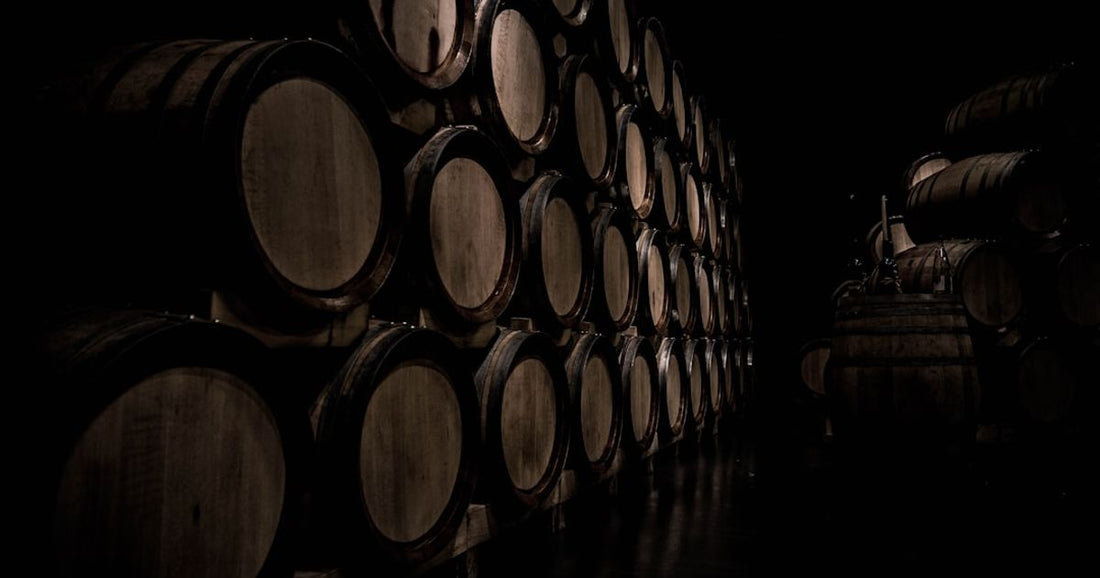
Different Aging Techniques in Spanish Wineries
Share
Spain, with its rich history and diverse climates, has long been a haven for wine enthusiasts and connoisseurs alike. The country's winemaking traditions span centuries, evolving over time to incorporate both ancient practices and modern innovations. Central to the allure of Spanish wines is the intricate process of aging, which significantly influences their flavor, aroma, and complexity. In this deep dive, we uncover the secrets behind the aging techniques employed in Spanish wineries, exploring the roles of oak, time, and tradition in crafting some of the world's most revered wines.
Key Takeaways
Before we embark on our journey through the aging cellars of Spain, here are some key points to keep in mind:
- Spanish wineries utilize a variety of aging techniques, each imparting unique characteristics to the wine.
- The choice of oak type and the duration of aging play pivotal roles in the development of a wine's flavor profile.
- Traditional practices, such as the use of large oak vats and aging in caves, are still in use today, alongside modern innovations.
- Understanding the aging process can enhance your appreciation of Spanish wines, revealing the craftsmanship behind each bottle.
The Significance of Oak in Wine Aging
Oak barrels are synonymous with wine aging, and for good reason. The type of oak, its origin, and the treatment of the barrels all contribute to the wine's final character. Spanish wineries, in particular, have mastered the art of using oak to enhance their wines, creating a harmonious balance between the grape's inherent qualities and the nuances imparted by the wood.
Types of Oak Used in Spanish Wineries
Spanish winemakers primarily rely on two types of oak: American and French. American oak, known for its pronounced vanilla and coconut flavors, tends to impart a bolder character to the wine. French oak, on the other hand, is subtler, contributing refined notes of spice and toast. The choice between the two depends on the wine style the winemaker aims to achieve. Some wineries also experiment with oak from other regions, such as Hungarian or Spanish oak, each adding its distinct touch to the aging process.
The Art of Barrel Toasting
Barrel toasting is an essential step in the preparation of oak barrels for wine aging. The interior of the barrel is exposed to a controlled flame, toasting the wood to varying degrees. Light toasting enhances the wine's structure and adds delicate flavors, while heavy toasting introduces more robust notes, such as caramel and coffee. The level of toasting is carefully chosen to complement the grape variety and the desired outcome of the aging process.
The Role of Time in Wine Maturation
Time is a winemaker's ally, transforming young, vibrant wines into complex, nuanced creations. The duration of aging, both in barrels and in the bottle, significantly affects a wine's evolution, dictating its readiness for consumption and potential for further aging.
Barrel Aging: A Balancing Act
Barrel aging is a delicate balance between exposing the wine to the beneficial effects of oak and ensuring it retains its fruit character. Too little time in the barrel may result in a wine that lacks complexity, while too much can overwhelm the wine's natural flavors. Spanish wineries meticulously monitor this process, adjusting the aging period based on the wine's varietal, vintage, and intended style. The result is a wine that beautifully integrates the qualities of the grape with the depth and character imparted by the oak.
Bottle Aging: The Test of Time
After barrel aging, wines are often transferred to bottles for further maturation. This stage, known as bottle aging, allows the wine to develop tertiary aromas and flavors, such as earth, leather, and truffle. The controlled environment of the bottle enables slow, steady evolution, refining the wine's texture and integrating its components. The duration of bottle aging varies, with some wines benefiting from just a few months, while others, particularly robust reds, may mature for decades.
Traditional Techniques Meet Modern Innovation
While the fundamentals of wine aging remain rooted in tradition, Spanish wineries are not afraid to innovate. The integration of new technologies and methodologies with time-honored practices ensures the continual evolution of Spanish wine, pushing the boundaries of quality and complexity.
The Use of Large Oak Vats
Some Spanish wineries still employ large oak vats for aging their wines, a method that dates back centuries. These vats, significantly larger than standard barrels, offer a different aging dynamic. The reduced surface area in contact with the wine results in a slower, more gentle oak influence, allowing the wine's fruit character to shine. This technique is particularly favored for wines intended to showcase the purity and intensity of the grape.
Aging in Caves: Harnessing Nature's Cellar
The natural cool and stable temperatures of underground caves provide an ideal environment for wine aging. In regions such as Rioja and Ribera del Duero, wineries utilize these caves to age their wines, benefiting from the consistent conditions year-round. The humidity levels in these caves also play a crucial role, minimizing evaporation and preserving the wine's volume and concentration. This age-old method, combined with modern understanding and control, exemplifies the harmonious blend of tradition and innovation in Spanish winemaking.
Conclusion: A Testament to Time and Tradition
The aging techniques employed in Spanish wineries are a testament to the country's deep respect for time and tradition. Through the careful selection of oak, meticulous control of aging durations, and the harmonious blend of ancient methods with modern innovations, Spanish wines continue to captivate and enchant wine lovers around the world. As we peel back the layers of the winemaking process, our appreciation for these liquid treasures only deepens, revealing the artistry and dedication behind each bottle.
In exploring the nuances of Spanish wine aging, we uncover not just the technical aspects, but the passion and heritage that define Spain's winemaking legacy. Whether you're savoring a robust Rioja or a delicate Albariño, understanding the journey from grape to glass enhances the experience, bridging the gap between the winemaker's vision and the final sip.
For more insights into the world of Spanish wines, including the benefits of choosing organic options and the challenges facing exporters, be sure to explore our other articles on Why Choose Organic Spanish Wines?, Challenges Facing Spanish Wine Exporters, and The Role of Spanish Wine Councils. Together, they provide a comprehensive look at the rich tapestry of Spain's wine culture, inviting you to uncork and discover the beauty within.


